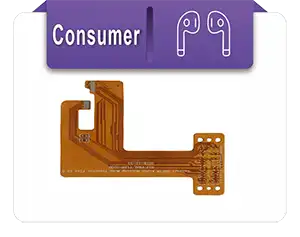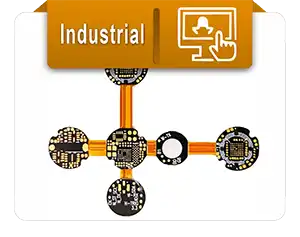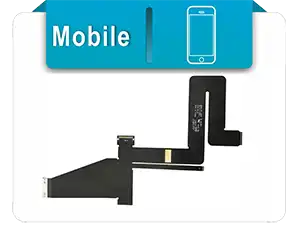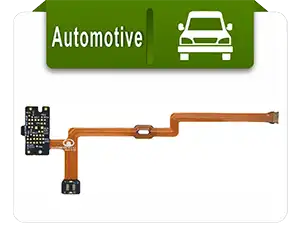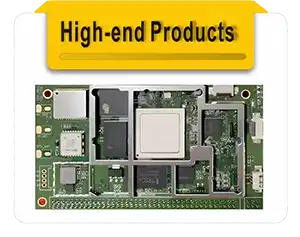Flexible PCBs for Medical Devices
1. Introduction: How Flex PCBs Are Revolutionizing Medical Device Innovation
The miniaturization, reliability, and biocompatibility requirements that every medical device requires have significantly accelerated the adoption of flexible printed circuit boards (Flex PCBs). These circuits are lightweight, foldable, and thin. They fit easily into tight spaces. This makes them great for wearable devices, implants, and smart diagnostic systems.
Engineers and designers are using flexible PCBs more in medical applications. These PCBs can fit the human body, resist stress, and keep working well. With a projected CAGR of 10.5% for the global medical Flex PCB market through 2030, the demand continues to rise sharply.
Click below to view how Gekun offers extensive experience in providing superior flexible PCBs and services to the commercial markets.
2. Key Applications of Flex PCBs in Medical Devices
Implantable Devices
In important devices like pacemakers and cochlear implants, Flex PCBs help them work well over time. For example, Medtronic’s heart monitors use very thin PCB designs. They use polyimide materials to make them small and strong.
Biodegradable Sensors: Temporary implants now use biodegradable rigid flex circuits. These circuits dissolve safely in the body after surgery. This process removes the need for surgery to take them out.
Diagnostic & Monitoring Systems
- Endoscopes: High-density interconnects (HDI) in 4K endoscope probes give real-time imaging. They offer flexibility and resolution that PCBs provide in tight surgical settings.
- Wearable Health Trackers: ECG patches, glucose monitors, and pulse oximeters use rigid flex PCBs. These help improve signal reliability and fit different body shapes.
Respiratory & Surgical Tools
CPAP Machines: Philips’ REMstar Auto has airflow control modules. These modules use flex circuits to improve sensor response and comfort.
Robotic Surgery Systems: Molex’s Premo-Flex® jumpers have a 0.25mm pitch PCB design. They help robotic arms move better and more accurately in minimally invasive surgeries.
In summary, Flex PCBs are essential in medical applications, offering comfort, accuracy, and adaptability for improved patient care.
3. Technical Requirements & Advanced Manufacturing
Material Selection
- Biocompatible Substrates: Polyimide is still the best choice. It works well at high temperatures and meets FDA and ISO standards for devices in the human body.
- Anti-Corrosion Coatings: Special nano-coatings shield circuits from bodily fluids and sterilization methods, further improving reliability in harsh medical environments.
High-Density Interconnect (HDI) Technology
- Laser Microvias: Precision drilling of <25μm is standard in hearing aids and neurostimulators, enabling compact multilayer boards.
- 3D Flexible Circuits: Materials like Formlabs Flexible 80A resin support accurate vascular modeling in phantom-based testing, enhancing next-generation medical applications.
Manufacturing Innovations
- In tools that need both strength and shape change, rigid-flex PCBs mix strong rigid layers with flexible layers.
- Self-Powered Systems: Triboelectric nanogenerators (TENGs) replace traditional batteries, enabling wearable devices to operate using body movement alone.
4. Emerging Trends Shaping the Future
AI & Brain-Computer Interfaces (BCI)
Neuralink’s flexible electrode systems connect directly with brain signals. They use ultra-thin, biocompatible PCBs. This technology brings a new generation of neural prosthetics and motor rehabilitation therapies.
Sustainable Manufacturing
Recyclable Materials: Innovations like Freudenberg’s HelixFlex™ TPE tubes reduce environmental impact while supporting high-sterility fluid transfer systems.
5G & IoT Integration
Flex PCBs in wearable devices connect to cloud platforms in real time. This improves remote monitoring and AI-assisted diagnostics in smart hospitals.
5. FAQ Section
Q1: How to Choose a Medical-Grade Flex PCB Supplier
- Certifications: Suppliers should comply with ISO 13485 and FDA/GMP to meet strict healthcare regulations.
- Design Expertise: A proven portfolio in rigid flex PCB development is essential for high-precision medical applications.
Q2: Medical devices benefit from Flex PCBs. Why?
A: They can fit into small spaces, resist rust, and keep working well. This makes them perfect for small, implantable, or wearable devices.
Q3: How do Flex PCBs improve long-term performance?
A: Advanced coatings and robust pcb design principles improve reliability and durability under physiological stress.
Q4: Do rigid flex circuits have the potential to replace traditional PCBs in surgical tools?
A: Yes. Rigid flex circuits combine the strength of rigid boards with the flexibility needed in tight spaces. They are great for devices that need to bend or change shape often.
Get A Quote



